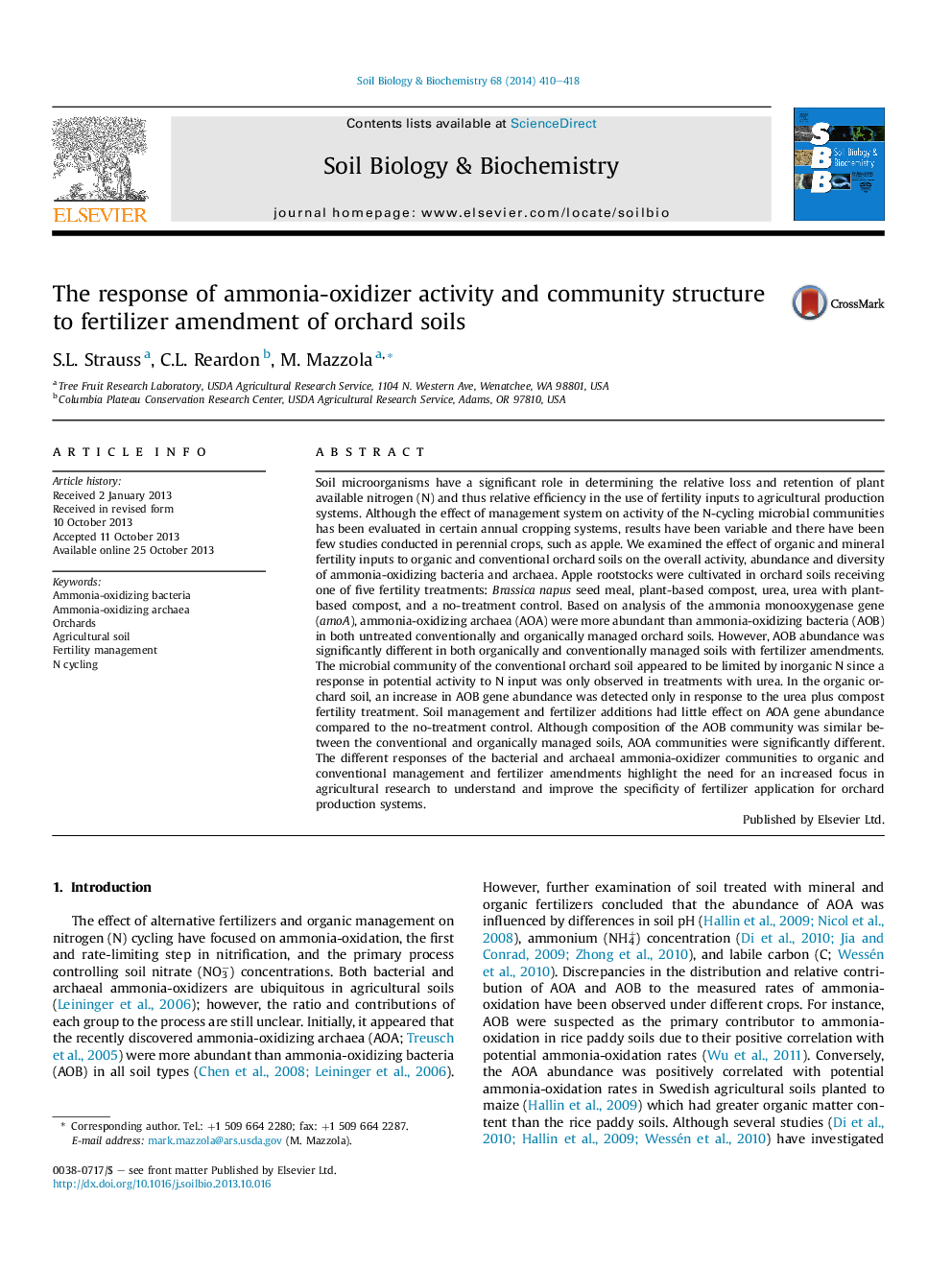| کد مقاله | کد نشریه | سال انتشار | مقاله انگلیسی | نسخه تمام متن |
|---|---|---|---|---|
| 8365181 | 1542616 | 2014 | 9 صفحه PDF | دانلود رایگان |
عنوان انگلیسی مقاله ISI
The response of ammonia-oxidizer activity and community structure to fertilizer amendment of orchard soils
ترجمه فارسی عنوان
پاسخ فعالیت اکسید کننده آمونیاک و ساختار اجتماعی به اصلاح کود از خاک های باغی
دانلود مقاله + سفارش ترجمه
دانلود مقاله ISI انگلیسی
رایگان برای ایرانیان
کلمات کلیدی
موضوعات مرتبط
علوم زیستی و بیوفناوری
علوم کشاورزی و بیولوژیک
دانش خاک شناسی
چکیده انگلیسی
Soil microorganisms have a significant role in determining the relative loss and retention of plant available nitrogen (N) and thus relative efficiency in the use of fertility inputs to agricultural production systems. Although the effect of management system on activity of the N-cycling microbial communities has been evaluated in certain annual cropping systems, results have been variable and there have been few studies conducted in perennial crops, such as apple. We examined the effect of organic and mineral fertility inputs to organic and conventional orchard soils on the overall activity, abundance and diversity of ammonia-oxidizing bacteria and archaea. Apple rootstocks were cultivated in orchard soils receiving one of five fertility treatments: Brassica napus seed meal, plant-based compost, urea, urea with plant-based compost, and a no-treatment control. Based on analysis of the ammonia monooxygenase gene (amoA), ammonia-oxidizing archaea (AOA) were more abundant than ammonia-oxidizing bacteria (AOB) in both untreated conventionally and organically managed orchard soils. However, AOB abundance was significantly different in both organically and conventionally managed soils with fertilizer amendments. The microbial community of the conventional orchard soil appeared to be limited by inorganic N since a response in potential activity to N input was only observed in treatments with urea. In the organic orchard soil, an increase in AOB gene abundance was detected only in response to the urea plus compost fertility treatment. Soil management and fertilizer additions had little effect on AOA gene abundance compared to the no-treatment control. Although composition of the AOB community was similar between the conventional and organically managed soils, AOA communities were significantly different. The different responses of the bacterial and archaeal ammonia-oxidizer communities to organic and conventional management and fertilizer amendments highlight the need for an increased focus in agricultural research to understand and improve the specificity of fertilizer application for orchard production systems.
ناشر
Database: Elsevier - ScienceDirect (ساینس دایرکت)
Journal: Soil Biology and Biochemistry - Volume 68, January 2014, Pages 410-418
Journal: Soil Biology and Biochemistry - Volume 68, January 2014, Pages 410-418
نویسندگان
S.L. Strauss, C.L. Reardon, M. Mazzola,
